Search Engine Optimization, or SEO, is the art and science of enhancing your website’s presence in search engines like Google. It involves a holistic approach that includes researching keywords, optimizing website elements, creating valuable content, and building high-quality backlinks to improve both visibility and user engagement. As search engines have become the primary method for users to discover and explore online content, comprehending the fundamentals of SEO is essential for any website owner or digital marketer looking to drive organic traffic and grow their online presence.
By embracing SEO best practices, we position our website to appear for relevant searches, which can drive qualified traffic to our site. It’s not solely about attracting visitors, though; it’s also about providing a seamless and engaging user experience that encourages interaction and conversions. With continual updates to search engine algorithms, maintaining an effective SEO strategy is an ongoing process that requires regular refinement and learning. This includes staying up-to-date with the latest SEO trends, analyzing your website’s performance, and adapting your tactics to meet the evolving needs of both search engines and users.
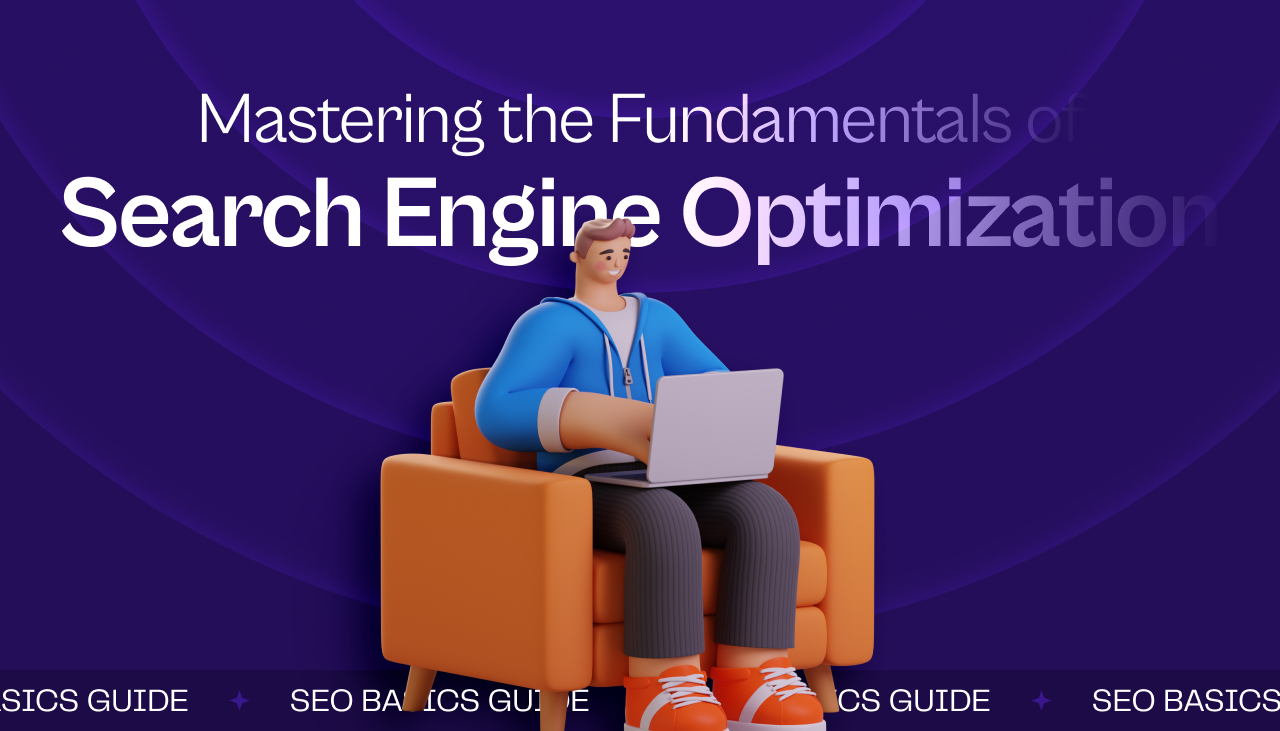
Key Takeaways
- SEO is crucial for improving online visibility, driving organic traffic, and enhancing user engagement.
- Quality content, proper keyword usage, and building high-quality backlinks are fundamental to a successful SEO strategy.
- Regular updates, adherence to best practices, and adapting to algorithm changes are necessary for maintaining SEO efficacy.
- Technical SEO, on-page optimization, and user experience are critical components of a comprehensive SEO approach.
- Measuring and analyzing SEO performance is essential for continuous improvement and ROI.
- SEO is crucial for improving online visibility and user engagement.
- Quality content and proper keyword usage are fundamental to a successful SEO strategy.
- Regular updates and adherence to best practices are necessary for maintaining SEO efficacy.
Understanding SEO and Its Importance
SEO, or search engine optimization, is critical for enhancing visibility and driving organic traffic to your website. The foundation it builds allows your content to be served as the answer to your audience’s queries.
What is SEO?
SEO (Search Engine Optimization) is the practice of optimizing a website to rank higher in search engine results pages (SERPs). It involves a set of strategies and techniques aimed at improving your site’s visibility and organic (non-paid) presence on Google and other search engines. The primary goals of SEO are to increase organic traffic, enhance user experience, and ultimately convert visitors into leads and customers. This is achieved through various methods including:
- n
- Keyword research and optimization
- Creating high-quality, relevant content
- Improving website structure and navigation
- Enhancing site speed and mobile-friendliness
- Building high-quality backlinks
- Optimizing for local search (for businesses with physical locations)
n
n
n
n
n
n
SEO is the practice of optimizing a website to rank higher in search engine results. It involves a set of actions aimed at improving your site’s presence on Google and other search engines. The goal is to increase visibility and attract more visitors, which can then be converted into leads and customers.
Benefits of SEO for Your Website
Increased Visibility and Brand Awareness: When your website consistently appears at the top of search results for relevant queries, it significantly increases your brand’s visibility. People tend to trust search engine rankings, viewing top-ranked sites as more credible and authoritative. This increased exposure not only translates into more visits but also enhances brand recognition and trust among users. Over time, this can lead to improved brand recall and a stronger market position.
Visibility and Branding: When your website appears at the top of search results, it gains more exposure. People tend to trust search engine rankings. A top position translates into more visits and, effectively, more trust from users.
High-Quality Inbound Traffic: One of the biggest advantages of SEO is its ability to increase both the quantity and quality of inbound traffic. By targeting specific keywords and optimizing for user intent, you attract users who are actively searching for information, products, or services related to what you offer. This targeted approach means:
- n
- Higher conversion rates as visitors are more likely to be interested in your offerings
- Improved user engagement metrics like time on site and pages per session
- Lower bounce rates as content matches searcher expectations
- Better return on investment compared to many paid advertising channels
n
n
n
n
Moreover, unlike paid traffic that stops when you stop paying, organic traffic from SEO can provide a consistent, long-term source of visitors to your website.
Measurable Return on Investment: SEO provides trackable and quantifiable results, making it easier to demonstrate ROI compared to many traditional marketing channels. Whether you’re an e-commerce site or a service-based business, SEO brings value by showing exactly where you are gaining leads and conversions. Advanced analytics tools can reveal:
- n
- The specific keywords driving traffic to your site
- The paths users take through your site, from landing page to conversion
- Which pages are most effective at converting visitors
- The geographic locations of your visitors
- The devices users are accessing your site from
n
n
n
n
n
This wealth of data allows you to continually refine your SEO strategy, focusing resources on the most effective tactics and improving underperforming areas. Over time, this data-driven approach can lead to significantly improved ROI as you optimize not just for search engines, but for user behavior and conversion paths as well.
The Role of Search Engines in SEO
Search engines serve as the critical bridge between your content and your audience. They use complex algorithms to crawl, index, and rank web pages based on hundreds of factors. Understanding how search engines work is crucial for effective SEO:
- n
- Crawling: Search engines use automated programs called ‘bots’ or ‘spiders’ to discover and scan web pages.
- Indexing: The information gathered during crawling is stored and organized in a massive database called an index.
- Ranking: When a user enters a query, the search engine’s algorithm sifts through its index to return the most relevant results, ranking them based on various factors including relevance, authority, and user experience.
n
n
n
Ensuring that search engines can easily find, crawl, and understand your content is a pivotal element of SEO. This involves optimizing various aspects of your website:
- n
- Technical structure and site architecture
- Content quality and relevance
- On-page elements like title tags and meta descriptions
- Internal and external linking
- Site speed and mobile-friendliness
n
n
n
n
n
By aligning your SEO efforts with how search engines work, you increase your chances of becoming a strong contender in the digital marketplace, improving your visibility for relevant searches and driving more qualified traffic to your site.
Search engines serve as the bridge between your content and your audience. They crawl your website to understand and rank your content’s relevance for users’ queries. Ensuring that these engines can easily find, crawl, and understand your content is a pivotal element of SEO. It is how you become a contender in the digital marketplace.
Keywords: The Foundation of SEO
Before we dive into the specifics, it’s crucial to understand that keywords are the cornerstone that drives the strategic placement in search results and aims to boost organic traffic through relevance and search intent.
The Basics of Keyword Research
Keyword research is the foundational step in SEO to identify the terms and phrases your target audience uses. We start by compiling a seed list, which is a collection of initial keywords relevant to our content. From there, we expand this list using various research tools that provide us with data on search volume and competition. We also study the SERPs to understand the types of content that are currently ranking for these keywords.
Utilizing Long-Tail Keywords
Long-tail keywords, which usually consist of three or more words, are specific and less competitive. They allow us to target niche demographics and capture users with more specific search intent. This specificity often leads to higher conversion rates, as the traffic attracted is more qualified and closer to a point of purchase or decision.
Keyword Optimization Best Practices
To maximize the effectiveness of our keywords, we adhere to a few best practices for keyword optimization. We ensure the primary keyword appears in key SEO elements like the title tag, meta description, and headings. We also maintain a balance in keyword density to avoid overstuffing, which can harm our rankings. Moreover, we optimize for relevance, making sure our content thoroughly answers the query associated with the keyword.
Technical Aspects of SEO
In this section, we’ll explore the critical elements that ensure a website is fully optimized from a technical perspective. Technical SEO forms the foundation of a successful SEO strategy, ensuring that search engines can easily crawl, index, and understand your website. We’ll address the integral components of technical SEO, including:
- n
- On-page optimization
- URL structuring
- Sitemap creation
- Structured data implementation
- Responsive design for mobile optimization
- Site speed optimization
- HTTPS implementation for security
- Handling of duplicate content and canonical tags
- Proper implementation of robots.txt and meta robots tags
n
n
n
n
n
n
n
n
n
Understanding and implementing these technical aspects is crucial for creating a solid foundation for your SEO efforts. It ensures that your content has the best possible chance of being discovered and ranked by search engines, ultimately driving more organic traffic to your site.
In this section, we’ll explore the critical elements that ensure a website is fully optimized from a technical perspective. We address the integral components of on-page optimization, URL structuring, sitemap creation, structured data utilization, and responsive design necessary for today’s SEO.
Mastering On-Page SEO
On-page SEO involves optimizing individual web pages to rank higher and earn more relevant traffic. This crucial aspect of SEO focuses on both the content visible to users and the HTML source code that search engines analyze. Key elements of on-page SEO include:
- n
- Title Tags: Unique, descriptive titles for each page that include target keywords
- Meta Descriptions: Compelling summaries of page content that encourage click-throughs from search results
- Header Tags (H1, H2, H3, etc.): Properly structured headings that organize content and include relevant keywords
- Content Optimization: High-quality, relevant content that satisfies user intent and incorporates target keywords naturally
- Image Optimization: Use of descriptive file names and alt text for images
- Internal Linking: Strategic use of internal links to distribute page authority and help users navigate your site
- URL Structure: Clean, descriptive URLs that include target keywords when appropriate
- Schema Markup: Implementation of structured data to help search engines understand your content better
n
n
n
n
n
n
n
n
By carefully optimizing these elements, we ensure that both search engines and users can easily understand what each page is about, improving our chances of ranking well and attracting relevant traffic.
On-page SEO involves optimizing individual web pages to rank higher and earn more relevant traffic. This includes optimizing the content and the HTML source code. Essential elements include title tags, meta descriptions, and proper header tags. We ensure that meta tags are adequately used to guide search engines and users on what our page is about.
Understanding the Importance of URL Structure
URLs are more than just web addresses—they are a fundamental component of technical SEO. A well-structured URL can significantly impact your SEO efforts by:
- n
- Helping search engines understand the relevance and hierarchy of your content
- Improving user experience by providing clear, readable addresses
- Potentially boosting click-through rates in search results
- Facilitating easier sharing of your content on social media and other platforms
n
n
n
n
To create SEO-friendly URLs, follow these best practices:
- n
- Keep URLs concise and descriptive
- Include relevant keywords when appropriate, but avoid keyword stuffing
- Use hyphens (-) to separate words, not underscores (_) or spaces
- Avoid using unnecessary parameters or session IDs
- Use lowercase letters to prevent duplicate content issues
- Create a logical hierarchy that reflects your site structure
- Consider using ‘breadcrumb’ navigation to reinforce your URL structure
n
n
n
n
n
n
n
Remember, while optimizing URL structure is important, it’s crucial to maintain consistency. If you need to change URLs on an existing site, implement proper 301 redirects to preserve SEO value and user experience.
URLs are more than just web addresses—they are a fundamental component of technical SEO. A good URL structure can help search engines understand the relevance and hierarchy of our content. It’s crucial that URLs are concise, include relevant keywords, and use hyphens to separate words.
Creating and Leveraging an Effective Sitemap
A sitemap serves as a comprehensive blueprint of our website, playing a crucial role in helping search engines efficiently find, crawl, and index all of our content. There are two main types of sitemaps:
- n
- XML Sitemaps: These are specifically designed for search engines and contain detailed information about your pages, including:
- URL location
- Last modified date
- Change frequency
- Priority (relative to other pages on your site)
- HTML Sitemaps: These are designed for human users and provide a hierarchical list of pages on your site, improving navigation and user experience.
n
- n
n
n
n
n
n
n
To maximize the effectiveness of your sitemap:
- n
- Create a logical structure that reflects your website’s hierarchy
- Include all important pages, but exclude low-value or duplicate content
- Regularly update your sitemap to reflect new or changed content
- Submit your XML sitemap to search engines via their webmaster tools (e.g., Google Search Console, Bing Webmaster Tools)
- Ensure your sitemap is under the size limit (usually 50MB uncompressed or 10MB compressed)
- For large sites, consider using a sitemap index file to manage multiple sitemaps
n
n
n
n
n
n
By creating and maintaining an effective sitemap, we significantly improve the chances of our web pages being discovered, crawled, and indexed by search engines, ultimately boosting our overall SEO performance.
A sitemap is a blueprint of our website that helps search engines find, crawl, and index all of our content. Creating a logical structure with a XML sitemap helps ensure our web pages are discovered and understood by search engines. We regularly update our sitemap and submit it via webmaster tools.
The Role of Structured Data in SEO
Structured data, also known as schema markup, is a standardized format for providing detailed information about a page and classifying its content. Implementing structured data can significantly enhance your SEO efforts by:
- n
- Helping search engines better understand your content
- Enabling rich snippets in search results, which can increase click-through rates
- Improving the chances of appearing in featured snippets or knowledge panels
- Enhancing your website’s visibility for voice search queries
n
n
n
n
Common types of structured data that can benefit SEO include:
- n
- Organization and local business information
- Product details (price, availability, reviews)
- Event information (date, time, location)
- Recipe details (ingredients, cooking time, nutritional information)
- Article metadata (author, publish date, headline)
- FAQ content
- Video information
n
n
n
n
n
n
n
To implement structured data:
- n
- Choose the appropriate schema type for your content from schema.org
- Implement the markup using JSON-LD (recommended by Google), Microdata, or RDFa
- Test your implementation using Google’s Structured Data Testing Tool
- Monitor the performance of your rich snippets in search results
n
n
n
n
By effectively using structured data, we can enhance the visibility and attractiveness of our pages in search results, potentially increasing our click-through rates and driving more targeted traffic to our site.
Structured data is a standardized format to provide information about a page and classify the page content. We use schema markup to help search engines understand our content and provide rich snippets in search results—like star ratings or event information. This enhances the visibility and attractiveness of our pages in search results.
Responsive Design and Mobile Optimization
In today’s digital landscape, a mobile-friendly website is not just a nice-to-have—it’s a cornerstone of SEO. With Google’s mobile-first indexing, the mobile version of your website is now considered the primary version for ranking and indexing. To ensure optimal performance across all devices, we focus on:
- n
- Responsive Design: This approach allows your website to adapt seamlessly to different screen sizes and devices. Key aspects include:
- Fluid grids that use relative units like percentages instead of fixed pixels
- Flexible images that scale with the layout
- Media queries to apply different styles based on device characteristics
- Mobile Performance Optimization: This ensures a smooth user experience on mobile devices by:
- Minimizing file sizes of images and other media
- Leveraging browser caching to store static resources
- Using lazy loading for images and videos
- Minimizing the use of large, complex JavaScript libraries
- Mobile-Specific User Experience: This involves tailoring the mobile experience to the unique needs of mobile users:
- Implementing a touch-friendly navigation menu
- Using larger, easily tappable buttons and form fields
- Prioritizing content for mobile users, who often have different intents than desktop users
- Page Speed Optimization: Mobile users expect fast-loading pages, so we focus on:
- Optimizing server response time
- Minimizing and compressing CSS, JavaScript, and HTML
- Leveraging Content Delivery Networks (CDNs) for faster resource delivery
- Implementing Accelerated Mobile Pages (AMP) for lightning-fast loading on mobile devices
n
- n
n
n
n
n
n
- n
n
n
n
n
n
n
- n
n
n
n
n
n
- n
n
n
n
n
n
By prioritizing mobile optimization, we not only improve our search engine rankings but also provide a better user experience for the growing number of mobile users, potentially increasing engagement, conversions, and overall satisfaction with our site.
A mobile-friendly website is now a cornerstone of SEO, as search engines increasingly prioritize mobile indexing. We focus on responsive design principles to ensure our pages work well on various devices. This includes optimizing our layout so it scales correctly and maintaining a high page speed on mobile networks.
Content is King: Crafting Valuable SEO Content
In the realm of SEO, the creation of high-quality, valuable content is paramount. It not only engages readers but also satisfies search engine algorithms, forming the foundation of a successful SEO strategy. Here’s why content is crucial and how to craft it effectively:
Why Content Matters for SEO
- n
- Satisfies User Intent: High-quality content answers users’ questions and solves their problems, leading to better engagement metrics.
- Attracts Backlinks: Valuable content naturally attracts links from other websites, boosting your site’s authority.
- Provides Ranking Opportunities: More content means more chances to rank for various keywords and phrases.
- Improves User Experience: Informative, well-structured content keeps users on your site longer, reducing bounce rates.
n
n
n
n
Crafting SEO-Friendly Content
- n
- Keyword Research: Start by identifying relevant keywords and topics that your audience is searching for.
- Content Planning: Develop a content strategy that addresses different stages of the buyer’s journey.
- Create In-Depth Content: Aim for comprehensive, authoritative pieces that thoroughly cover the topic.
- Optimize for Readability: Use short paragraphs, subheadings, bullet points, and images to make content easy to scan.
- Include Relevant Keywords: Naturally incorporate target keywords into your content, including headers and meta descriptions.
- Add Internal and External Links: Link to other relevant pages on your site and authoritative external sources.
- Optimize for Featured Snippets: Structure content to increase chances of appearing in featured snippets (e.g., using Q&A format, tables, lists).
- Keep Content Fresh: Regularly update and improve existing content to maintain relevance and rankings.
n
n
n
n
n
n
n
n
Remember, while optimizing for search engines is important, your primary focus should always be on creating content that provides value to your audience. By consistently producing high-quality, relevant content, you’ll not only improve your SEO performance but also build trust and authority in your industry.
In the realm of SEO, the creation of high-quality content is paramount. It not only engages readers but also satisfies search engine algorithms.
The Art and Science of SEO Content Writing
Creating content for SEO is a sophisticated blend of art and science, requiring a deep understanding of both user needs and search engine algorithms. Here’s how to master the art of SEO content writing:
- n
- Understand Your Audience:
- Develop detailed buyer personas to understand your target audience’s needs, pain points, and search intent.
- Use tools like Google Analytics and social media insights to gather data on your audience’s preferences and behavior.
- Conduct Thorough Keyword Research:
- Use keyword research tools to identify relevant, high-volume keywords with manageable competition.
- Look for long-tail keywords that indicate specific user intent.
- Analyze competitor content to identify keyword gaps and opportunities.
- Create Valuable, In-Depth Content:
- Focus on creating comprehensive, authoritative content that thoroughly addresses the topic.
- Aim to provide unique insights or data that can’t be found elsewhere.
- Include relevant examples, case studies, or statistics to support your points.
- Optimize Content Structure:
- Use a clear, logical structure with headings and subheadings (H1, H2, H3, etc.) to organize your content.
- Include a table of contents for longer pieces to improve navigation.
- Use short paragraphs, bullet points, and numbered lists to improve readability.
- Incorporate Keywords Naturally:
- Include your target keyword in the title, first paragraph, and throughout the content where it fits naturally.
- Use related keywords and synonyms to provide context and avoid keyword stuffing.
- Optimize meta titles and descriptions with relevant keywords.
- Enhance User Experience:
- Include relevant images, infographics, or videos to break up text and provide visual interest.
- Ensure your content is mobile-friendly and loads quickly on all devices.
- Use internal links to guide readers to related content on your site.
- Craft Compelling Calls-to-Action:
- Include relevant CTAs that guide users to take the next step in their journey.
- Ensure CTAs are clear, compelling, and aligned with the user’s intent.
n
- n
n
n
n
n
- n
n
n
n
n
n
- n
n
n
n
n
n
- n
n
n
n
n
n
- n
n
n
n
n
n
- n
n
n
n
n
n
- n
n
n
n
By mastering these elements, we can create content that not only ranks well in search engines but also provides genuine value to our readers, guiding them naturally through the content and encouraging engagement with our brand.
Creating content for SEO is a blend of art and science. We aim to provide value and context in every piece. This means every article, blog post, or web page we craft is both informative and easy to read, with a structure that guides the reader naturally through the content.
Incorporating Relevant Keywords: A Strategic Approach
Keyword research is a foundational step in our SEO content creation process. It’s not just about finding popular search terms, but about understanding the language your audience uses and the intent behind their searches. Here’s how to develop and implement a comprehensive keyword strategy:
- n
- Conduct Thorough Keyword Research:
- Use tools like Google Keyword Planner, SEMrush, or Ahrefs to identify relevant keywords.
- Analyze search volume, keyword difficulty, and competition for each potential keyword.
- Look for keyword variations and related terms to expand your list.
- Understand Keyword Types:
- High-Traffic Keywords: Broad terms with significant search volumes. These are often more competitive but can drive substantial traffic.
- Long-Tail Keywords: More specific phrases that are less competitive but highly targeted. These often have higher conversion rates.
- Semantic Keywords: Related terms and synonyms that help search engines understand the context of your content.
- Analyze Search Intent:
- Categorize keywords based on intent: informational, navigational, commercial, or transactional.
- Ensure your content aligns with the search intent behind your target keywords.
- Prioritize Keywords:
- Focus on keywords that are most relevant to your business and have a good balance of search volume and competition.
- Consider the potential ROI of ranking for each keyword.
- Integrate Keywords Naturally:
- Include your primary keyword in the title, first paragraph, and throughout the content where it fits naturally.
- Use variations and long-tail keywords in subheadings and body text.
- Avoid keyword stuffing, which can harm your SEO and readability.
- Optimize On-Page Elements:
- Include keywords in your meta title and description, URL, and image alt text.
- Use schema markup to provide additional context to search engines.
- Monitor and Adjust:
- Regularly track your keyword rankings and adjust your strategy as needed.
- Stay updated on industry trends and changes in search behavior that might affect your keyword strategy.
n
- n
n
n
n
n
n
- n
n
n
n
n
n
- n
n
n
n
n
- n
n
n
n
n
- n
n
n
n
n
n
- n
n
n
n
n
- n
n
n
n
By implementing a well-balanced keyword strategy that includes both high-traffic and long-tail keywords, we can attract the right audience at various stages of the buyer’s journey. Remember, the goal is not just to drive traffic, but to attract qualified visitors who are likely to engage with your content and convert into customers.
Keyword research is a foundational step in our process. We carefully select keywords that are pertinent to our content’s topic and ensure they are integrated naturally into our text. A well-balanced keyword strategy includes both high-traffic and long-tail keywords to attract the right audience.
- High-Traffic Keywords: Broad terms with significant search volumes.
- Long-Tail Keywords: More specific phrases that are less competitive but highly targeted.
Crafting Engaging Meta Descriptions and Title Tags: Your First Impression in Search Results
The title tag and meta description are critical elements of on-page SEO, serving as your content’s first impression in search engine results pages (SERPs). These elements not only influence your click-through rates but also help search engines understand your content. Here’s how to craft compelling title tags and meta descriptions:
Title Tags:
- n
- Length: Keep titles under 60 characters to ensure they display fully in SERPs.
- Keyword Placement: Include your primary keyword near the beginning of the title.
- Uniqueness: Create a unique title for each page on your site.
- Relevance: Accurately describe the page’s content to meet user expectations.
- Branding: Consider including your brand name at the end of the title, especially for homepage and main category pages.
- Compelling Language: Use action words, numbers, or questions to make your title stand out.
n
n
n
n
n
n
Meta Descriptions:
- n
- Length: Aim for 150-160 characters to prevent truncation in search results.
- Keyword Usage: Naturally incorporate your primary keyword and relevant secondary keywords.
- Unique Value Proposition: Clearly state what makes your content unique or valuable.
- Call-to-Action: Include a compelling reason for users to click through to your page.
- Relevance: Ensure the description accurately reflects the page’s content.
- Avoid Duplication: Write unique meta descriptions for each page.
n
n
n
n
n
n
Best Practices for Both:
- n
- Match Search Intent: Ensure your titles and descriptions align with the user’s search intent.
- Avoid Keyword Stuffing: Use keywords naturally and avoid over-optimization.
- Update Regularly: Refresh titles and descriptions for seasonal content or to improve performance.
- Use Structured Data: Implement schema markup to enhance your SERP appearance with rich snippets.
- A/B Testing: Experiment with different formats and monitor click-through rates to optimize performance.
n
n
n
n
n
Remember, while title tags and meta descriptions don’t directly impact rankings, they significantly influence click-through rates, which can indirectly affect your SEO performance. By crafting clear, compelling, and keyword-rich title tags and meta descriptions, we can increase the visibility and attractiveness of our pages in search results, driving more qualified traffic to our site.
The title tag and meta description are critical for capturing user attention in search engine results. We write title tags that are clear and incorporate primary keywords. Meta descriptions provide a compelling summary, tempting readers to click through. Both are carefully composed to reflect the content’s essence while adhering to SEO best practices.
Link Building Strategies
In this guide, we’ll explore the tactics we can use to strengthen a website’s SEO through effective link building strategies.
The Importance of Backlinks
Backlinks are invaluable to SEO. They serve as endorsements from other websites, signaling to search engines that our content is credible and authoritative. High-quality backlinks can markedly improve our website’s visibility and ranking in search engine results.
Internal vs. External Links
Internal links connect different pages within our website, helping us to build a robust site structure that search engines can crawl efficiently. External links, on the other hand, are those we acquire from other websites, which can significantly boost our domain authority. It’s critical for us to maintain a balance between internal and external linking to construct a holistically strong SEO profile.
Ethical Link Building Techniques
When building links, we must adhere to ethical practices. We employ outreach to connect with relevant websites and offer them valuable content that naturally incorporates our anchor text. This approach ensures that the links we generate are genuine and provide mutual benefit, maintaining the integrity of our link building efforts. We stay away from any strategies that could be deemed manipulative or violate search engine guidelines.
SEO Tools and Analytics
In the ever-evolving field of SEO, tools and analytics play a pivotal role. They empower us to understand our website’s performance and carve out strategies to improve our online presence.
Leveraging Google Analytics for SEO
Google Analytics is an indispensable tool for monitoring and analyzing website traffic. By using it, we can see which pages attract the most visitors and where our traffic originates. It helps us comprehend user behavior and tweak our SEO tactics accordingly. Integration with Google Search Console allows for a more granulated view of how our pages perform in Google search results.
Utilizing SEO Audit Tools
SEO audit tools are essential for identifying strengths and weaknesses in our website’s overall SEO. Tools like Moz Pro offer a comprehensive suite of utilities that evaluate our site’s health. With SEO audit tools, we quickly uncover technical issues such as broken links, crawl errors, and optimization opportunities. Regular audits ensure our site adheres to the latest SEO best practices.
Keyword Research Tools and Resources
Keyword research is at the heart of SEO. We use keyword research tools to uncover the terms and phrases our audience is searching for. This allows us to create content that aligns with their interests and search behaviors. Through these tools, we also gain insights into keyword competitiveness and search volume which guide our content strategies and help us to optimize for both short and long-tail keywords.
User Experience and SEO
User experience (UX) is a critical factor that influences both the engagement of visitors on our site and its rankings on search engines like Google.
Site Speed and User Engagement
Page speed is a pivotal component of UX. It’s crucial because visitors tend to abandon sites that take longer than a few seconds to load. We should aim to optimize our site’s loading time to keep user engagement high. Methods to enhance site speed include minimizing server response time, reducing image sizes, and using browser caching.
The Impact of UX on SEO Rankings
A site’s UX goes beyond aesthetics; it involves the overall site structure and design that facilitate easy navigation. Google has acknowledged UX as a ranking signal. This means that sites providing a positive UX can expect to see improvements in their Google ranking. Elements that contribute to a good UX and potentially boost our traffic include mobile responsiveness, clear calls to action, and useful, easily accessible content.
Beyond Google: SEO for Other Search Engines
When we discuss SEO, it’s crucial to acknowledge that Google is not the only search engine on the block. Bing, along with a few other contenders, also holds a significant share of the search market.
Optimizing for Bing and Other Search Alternatives
Bing: Microsoft’s Bing holds a noteworthy portion of the search engine traffic, and optimizing for its SERPs requires specific considerations. Unlike Google, Bing places substantial weight on the use of exact keywords and traditional SEO signals such as meta tags and title tags. We must ensure these elements are optimized to capitalize on Bing’s traffic.
Meta Tags and Content: In Bing, meta descriptions and keyword-rich content play a more pronounced role. These factors contribute to how well our pages are understood and ranked. Therefore, every page should have a succinct, descriptive meta tag, and our content must clearly reflect our target keywords.
Backlinks: Bing places emphasis on the quality, rather than just the quantity, of backlinks. Prioritizing backlinks from high-authority sites is crucial for us to gain traction in Bing’s SERPs.
Social Signals: We shouldn’t ignore social signals when optimizing for Bing. A strong social presence can enhance visibility, as Bing recognizes shares and likes as marks of content validity and quality.
Technical SEO: Site performance and user experience are pivotal, with Bing also considering factors such as page load time and mobile responsiveness. Sites that are technically optimized are likely to perform better in both Bing and other search engine rankings.
SEO Compliance and Best Practices: Navigating the Ever-Changing Landscape
To maintain and enhance our website’s visibility in search engines, we must adhere to certain standards and practices. SEO is a dynamic field, with search engines constantly updating their algorithms to provide better results for users. Staying compliant with best practices not only helps improve our rankings but also ensures we’re providing the best possible experience for our visitors. Here’s an overview of key areas to focus on:
- n
- Content Quality and Relevance:
- Create high-quality, original content that provides value to users
- Ensure content is relevant to your target keywords and user intent
- Regularly update and improve existing content
- Technical SEO:
- Optimize site speed and mobile responsiveness
- Implement proper URL structure and internal linking
- Use schema markup to help search engines understand your content
- On-Page SEO:
- Optimize title tags, meta descriptions, and header tags
- Use descriptive, keyword-rich URLs
- Optimize images with alt text and descriptive file names
- User Experience:
- Ensure easy navigation and logical site structure
- Optimize for Core Web Vitals (loading, interactivity, visual stability)
- Make your site accessible to all users, including those with disabilities
- Link Building:
- Focus on earning high-quality, relevant backlinks
- Avoid manipulative link building practices
- Use internal linking to distribute page authority and help users navigate your site
- Local SEO (if applicable):
- Optimize your Google My Business listing
- Ensure NAP (Name, Address, Phone) consistency across the web
- Encourage and manage customer reviews
- Mobile Optimization:
- Ensure your site is fully responsive on all devices
- Optimize for mobile-first indexing
- Consider implementing Accelerated Mobile Pages (AMP) for faster loading
- Security:
- Use HTTPS encryption across your entire site
- Implement measures to protect against hacking and malware
n
- n
n
n
n
n
n
- n
n
n
n
n
n
- n
n
n
n
n
n
- n
n
n
n
n
n
- n
n
n
n
n
n
- n
n
n
n
n
n
- n
n
n
n
n
n
- n
n
n
n
By adhering to these best practices and staying informed about the latest SEO trends and algorithm updates, we can maintain and improve our search engine visibility while providing an excellent user experience. Remember, SEO is not a one-time effort but an ongoing process of optimization and improvement.
We must adhere to certain standards and practices to maintain and enhance our website’s visibility in search engines.
Understanding Google’s Algorithms and Updates: Staying Ahead in the SEO Game
Google’s search algorithms are a complex and ever-evolving set of rules that determine how webpages are ranked in search results. Understanding these algorithms and staying updated on changes is crucial for maintaining and improving our site’s visibility. Here’s a comprehensive look at Google’s algorithms and how to adapt to updates:
Key Google Algorithms:
- n
- PageRank: One of Google’s original algorithms, it evaluates the quality and quantity of links to a page to estimate its importance.
- Panda: Focuses on content quality, penalizing sites with thin, duplicate, or low-quality content.
- Penguin: Targets manipulative link building practices and keyword stuffing.
- Hummingbird: Improves understanding of search intent and context, enabling better interpretation of long-tail queries.
- RankBrain: A machine learning system that helps Google process and understand search queries.
- BERT: Enhances Google’s understanding of natural language, improving the relevance of search results.
- Core Web Vitals: Focuses on user experience metrics like loading speed, interactivity, and visual stability.
n
n
n
n
n
n
n
Staying Updated and Adapting:
- n
- Monitor Official Google Channels: Regularly check the Google Search Central Blog and Google SearchLiaison Twitter account for announcements.
- Follow SEO News Sites: Stay informed through reputable SEO news sources like Search Engine Journal, Search Engine Land, and Moz.
- Analyze Your Traffic: Use Google Analytics and Google Search Console to monitor changes in your site’s performance that might indicate an algorithm update.
- Focus on User Experience: Many updates aim to reward sites that provide excellent user experiences, so prioritize this in your SEO strategy.
- Diversify Your Traffic Sources: Don’t rely solely on organic search; build a strong presence on social media and other platforms.
- Avoid Black Hat Techniques: Stick to white hat SEO practices to avoid penalties from algorithm updates.
- Be Patient: Algorithm updates can take time to fully roll out and stabilize. Don’t make drastic changes based on short-term fluctuations.
n
n
n
n
n
n
n
Adapting to Core Updates:
- n
- Conduct a Content Audit: Regularly review and improve your content, especially after major updates.
- Enhance E-A-T Signals: Focus on demonstrating Expertise, Authoritativeness, and Trustworthiness in your content and overall site presentation.
- Improve Technical SEO: Ensure your site is crawlable, has fast load times, and is mobile-friendly.
- Build Quality Backlinks: Focus on earning links from reputable, relevant sites in your industry.
- Optimize for User Intent: Ensure your content aligns with the search intent behind your target keywords.
n
n
n
n
n
By staying informed about Google’s algorithms and adapting our SEO strategies accordingly, we can maintain and improve our site’s visibility in search results. Remember, the ultimate goal of these algorithms is to provide the best possible results for users, so focusing on creating high-quality, user-centric content and experiences will always be a winning strategy.
Google’s algorithms are a complex set of rules that determine the ranking of webpages in search results. It’s essential to understand core updates and how they may impact our site’s visibility. PageRank, for example, is one of Google’s original algorithms that evaluates the quality and quantity of links to a page, helping to estimate its importance.
The Necessity of HTTPS for Security: A Crucial Element of Modern SEO
In today’s digital landscape, website security is not just a best practice—it’s a necessity. HTTPS (Hypertext Transfer Protocol Secure) has become a fundamental requirement for SEO compliance and user trust. Here’s a comprehensive look at why HTTPS is crucial and how to implement it effectively:
Why HTTPS is Essential:
- n
- SEO Ranking Signal: Google has confirmed that HTTPS is a ranking factor, giving a slight boost to secure sites in search results.
- User Trust: The padlock icon in browsers assures visitors that their connection is secure, increasing trust and potentially improving conversion rates.
- Data Protection: HTTPS encrypts data transmitted between the user’s browser and your server, protecting sensitive information from interception.
- Chrome Security Warnings: Google Chrome and other browsers display “Not Secure” warnings for non-HTTPS sites, which can deter visitors.
- Improved Accuracy of Referral Data: HTTPS to HTTPS referrals preserve referrer data, providing more accurate analytics.
- Requirement for Progressive Web Apps: If you’re considering developing a PWA, HTTPS is a requirement.
n
n
n
n
n
n
Implementing HTTPS:
- n
- Obtain an SSL Certificate:
- Choose the right type of certificate (e.g., Domain Validated, Organization Validated, or Extended Validation)
- Consider using a free certificate from Let’s Encrypt or purchase from a trusted Certificate Authority
- Install the SSL Certificate:
- Work with your hosting provider or IT team to install the certificate on your server
- Ensure proper configuration to avoid mixed content issues
- Update Internal Links:
- Change all internal links from HTTP to HTTPS
- Update canonical tags, hreflang tags, and sitemaps
- Set Up 301 Redirects:
- Redirect all HTTP URLs to their HTTPS equivalents
- Use server-side 301 redirects for best SEO results
- Update External Services:
- Update any third-party services or plugins to use HTTPS URLs
- Don’t forget about CDNs, analytics services, and ad networks
- Implement HSTS:
- Use HTTP Strict Transport Security to ensure all connections use HTTPS
n
- n
n
n
n
n
- n
n
n
n
n
- n
n
n
n
n
- n
n
n
n
n
- n
n
n
n
n
- n
n
n
Post-Implementation Steps:
- n
- Test Your Setup: Use tools like SSL Labs’ Server Test to check your HTTPS implementation
- Update Google Search Console: Add the HTTPS version of your site as a new property
- Monitor Traffic and Rankings: Keep an eye on your analytics to ensure a smooth transition
- Update Backlinks: Reach out to important referrers to update their links to your site
n
n
n
n
By implementing HTTPS, we not only improve our search engine rankings but also provide a secure browsing experience for our users. This security measure positively affects search traffic, user trust, and overall site credibility. In an era where data privacy is increasingly important, HTTPS is no longer optional—it’s a fundamental aspect of a well-optimized, user-friendly website.
Secure domains protect user data and are a ranking signal for Google. Websites using HTTPS protocol assure visitors that their connection is secure, and it’s a fundamental SEO compliance requisite. This security measure positively affects search traffic and trustworthiness.
Staying Updated with SEO Trends and Changes: A Proactive Approach
The landscape of SEO is constantly evolving, with search engines regularly updating their algorithms and new technologies emerging. To stay competitive and maintain our search visibility, we must adopt a proactive approach to staying updated with SEO trends and changes. Here’s a comprehensive strategy for keeping our SEO knowledge and tactics current:
1. Follow Authoritative SEO Resources:
- n
- Official Sources: Google Search Central Blog, Google SearchLiaison Twitter
- Industry Publications: Search Engine Journal, Search Engine Land, Moz Blog
- SEO Thought Leaders: Follow respected SEO experts on social media
n
n
n
2. Attend SEO Conferences and Webinars:
- n
- Participate in major conferences like SMX, Brighton SEO, and Pubcon
- Attend webinars hosted by SEO tools and industry leaders
n
n
3. Join SEO Communities:
- n
- Participate in forums like WebmasterWorld and Reddit’s r/SEO
- Join SEO-focused groups on LinkedIn and Facebook
n
n
4. Experiment and Test:
- n
- Conduct your own experiments to verify new SEO theories
- Use tools like Google Search Console’s URL Inspection tool to understand how Google views your pages
n
n
5. Invest in Ongoing Education:
- n
- Take online courses from platforms like Coursera, Udemy, or industry-specific training programs
- Consider getting certifications from reputable organizations
n
n
6. Monitor Your Site’s Performance:
- n
- Regularly analyze your site’s performance in Google Analytics and Search Console
- Set up alerts for significant changes in traffic or rankings
- Use tools like SEMrush or Ahrefs to monitor your competitors’ performance
n
n
n
7. Adapt to New Technologies:
- n
- Stay informed about emerging technologies like voice search, AI, and machine learning
- Understand how these technologies might impact SEO and user behavior
n
n
8. Network with Other SEO Professionals:
- n
- Attend local SEO meetups or start your own
- Engage in discussions on professional networking platforms
n
n
9. Subscribe to SEO Newsletters:
- n
- Sign up for newsletters from reputable SEO blogs and tools
- Create a dedicated email folder to organize and review these updates regularly
n
n
10. Implement and Iterate:
- n
- Regularly review and update your SEO strategy based on new insights
- Implement changes incrementally and measure their impact
- Be prepared to pivot quickly if certain tactics aren’t yielding results
n
n
n
By adopting these practices, we can stay ahead of the curve in the ever-changing world of SEO. Remember, staying updated isn’t just about knowing the latest trends—it’s about understanding how to apply this knowledge effectively to our specific situation. Our commitment to continuous learning and adaptation will ensure that our SEO strategies remain effective and competitive in the long run.
Our strategies must evolve with the ever-changing landscape of SEO to stay competitive. Whether it’s adapting to Google’s ongoing algorithm updates or embracing new best practices, staying current is non-negotiable. We must remain committed to implementing consistent updates and tweaks to our SEO tactics in response to industry changes.
Continual Improvement and SEO Maintenance: The Key to Long-Term Success
We understand that SEO isn’t a one-time task; it’s an ongoing commitment to excellence. Success in search engine rankings comes from persistent refinement and adaptation to the shifting digital landscape. This continuous process involves several key components:
- n
- Regular Content Audits:
- Periodically review all content for relevance, accuracy, and performance
- Update or remove outdated content
- Identify content gaps and opportunities for new topics
- Ongoing Keyword Research:
- Regularly reassess your keyword strategy
- Identify new keyword opportunities as they emerge
- Adapt to changes in search trends and user behavior
- Technical SEO Maintenance:
- Regularly crawl your site to identify and fix technical issues
- Monitor site speed and implement improvements
- Ensure mobile-friendliness across all pages
- Link Profile Management:
- Regularly audit your backlink profile
- Disavow toxic or spammy links
- Continuously work on earning high-quality backlinks
- User Experience Optimization:
- Analyze user behavior metrics (bounce rate, time on page, etc.)
- Conduct user testing to identify areas for improvement
- Implement changes to enhance overall user experience
- Algorithm Update Adaptation:
- Stay informed about major algorithm updates
- Analyze the impact of updates on your site’s performance
- Adjust strategies as necessary to align with new ranking factors
- Competitor Analysis:
- Regularly monitor competitor strategies and performance
- Identify opportunities to outperform competitors
- Adapt successful strategies to your own site
- Performance Tracking and Reporting:
- Set up comprehensive tracking of key SEO metrics
- Regularly report on performance and ROI
- Use insights to inform future strategy decisions
- Local SEO Maintenance (if applicable):
- Keep local listings up-to-date across all platforms
- Consistently manage and respond to reviews
- Optimize for local search trends and behaviors
- Continuous Learning and Skill Development:
- Invest in ongoing SEO education for your team
- Experiment with new tools and technologies
- Share knowledge and best practices within your organization
n
- n
n
n
n
n
n
- n
n
n
n
n
n
- n
n
n
n
n
n
- n
n
n
n
n
n
- n
n
n
n
n
n
- n
n
n
n
n
n
- n
n
n
n
n
n
- n
n
n
n
n
n
- n
n
n
n
n
n
- n
n
n
n
n
By committing to this process of continual improvement and maintenance, we can ensure that our SEO efforts remain effective in the long term. This approach allows us to not only maintain our current search engine rankings but also identify new opportunities for growth and improvement. Remember, SEO is not a destination but a journey of constant learning, adaptation, and refinement.
We understand that SEO isn’t a one-time task; it’s an ongoing commitment to excellence. Success in search engine rankings comes from persistent refinement and adaptation to the shifting digital landscape.
Regular SEO Audits and Updates: A Systematic Approach to Optimization
Regular SEO audits and updates are crucial for maintaining and improving our website’s search engine performance. This systematic approach allows us to identify issues, capitalize on opportunities, and stay aligned with the latest SEO best practices. Here’s a comprehensive look at how to conduct effective SEO audits and implement updates:
SEO Audit Process:
- n
- Technical SEO Audit:
- Crawl the website to identify indexation issues
- Check for broken links and redirect chains
- Evaluate site speed and Core Web Vitals
- Assess mobile-friendliness
- Review robots.txt and XML sitemap
- On-Page SEO Audit:
- Analyze title tags, meta descriptions, and header tags
- Evaluate content quality and relevance
- Check for keyword cannibalization
- Review internal linking structure
- Off-Page SEO Audit:
- Analyze backlink profile for quality and relevance
- Identify toxic or spammy links
- Assess brand mentions and citations
- Content Audit:
- Evaluate content for relevance, accuracy, and freshness
- Identify content gaps and opportunities
- Assess content performance metrics
- Competitor Analysis:
- Compare keyword rankings with competitors
- Analyze competitor backlink profiles
- Identify content strategies that are working for competitors
n
- n
n
n
n
n
n
n
n
- n
n
n
n
n
n
n
- n
n
n
n
n
n
- n
n
n
n
n
n
- n
n
n
n
n
Implementing Updates:
- n
- Prioritize Issues:
- Categorize findings by impact and effort required
- Create a prioritized action plan
- Technical Improvements:
- Fix broken links and improve site architecture
- Implement speed optimizations
- Resolve mobile usability issues
- On-Page Optimizations:
- Update title tags and meta descriptions
- Improve header structure and content organization
- Enhance internal linking
- Content Updates:
- Refresh outdated content
- Create new content to fill identified gaps
- Optimize existing content for target keywords
- Off-Page Improvements:
- Disavow toxic backlinks
- Develop a strategy to earn high-quality backlinks
- Improve local citations (if applicable)
n
- n
n
n
n
n
- n
n
n
n
n
n
- n
n
n
n
n
n
- n
n
n
n
n
n
- n
n
n
n
n
Monitoring and Iteration:
- n
- Track changes in rankings, traffic, and conversions
- Analyze the impact of implemented updates
- Adjust strategies based on performance data
- Schedule regular follow-up audits (e.g., quarterly or bi-annually)
n
n
n
n
By conducting thorough SEO audits and systematically implementing updates, we ensure that our website remains aligned with the best SEO practices and industry standards. This process of continuous improvement allows us to enhance our search engine performance, stay ahead of competitors, and provide a better experience for our users. Remember, SEO is an ongoing process, and regular audits and updates are key to long-term success in search engine rankings.
SEO Audit
- We conduct thorough SEO audits to identify areas needing improvement.
- This process includes checking for broken links, assessing page speeds, and evaluating the effectiveness of our keywords.
Updates
- Following our audits, we systematically implement updates to enhance performance.
- Consistent updates ensure that our website remains aligned with the best SEO practices and industry standards.
Long-Term SEO Strategy and Planning: Building Sustainable Success
Developing a long-term SEO strategy is crucial for sustainable success in search engine rankings. This approach allows us to anticipate future trends, adapt to changes in the search landscape, and maintain a competitive edge. Here’s a comprehensive guide to creating and implementing a long-term SEO strategy:
1. Define Long-Term Goals and KPIs:
- n
- Set specific, measurable, achievable, relevant, and time-bound (SMART) goals
- Identify key performance indicators (KPIs) that align with business objectives
- Consider both traffic and conversion metrics
n
n
n
2. Conduct Comprehensive Market Research:
- n
- Analyze your target audience’s search behavior and preferences
- Identify long-term industry trends and potential disruptions
- Assess competitor strategies and market positioning
n
n
n
3. Develop a Content Strategy:
- n
- Create a content calendar that aligns with long-term goals
- Plan for evergreen content that will remain relevant over time
- Incorporate a mix of content types (blog posts, videos, infographics, etc.)
n
n
n
4. Implement Technical SEO Best Practices:
- n
- Ensure a solid technical foundation that can support future growth
- Plan for scalability in site architecture and infrastructure
- Stay ahead of emerging technologies (e.g., voice search optimization, AI)
n
n
n
5. Build a Sustainable Link Building Strategy:
- n
- Focus on earning high-quality, relevant backlinks
- Develop long-term relationships with industry influencers and publications
- Create linkable assets that provide long-term value
n
n
n
6. Invest in Brand Building:
- n
- Develop a strong brand identity that resonates with your target audience
- Create brand-driven search demand through multi-channel marketing
- Focus on building brand authority and trust signals
n
n
n
7. Allocate Resources for Continuous Learning:
- n
- Budget for ongoing SEO education and training
- Stay informed about emerging SEO trends and technologies
- Attend industry conferences and networking events
n
n
n
8. Plan for Algorithm Resilience:
- n
- Diversify traffic sources to reduce dependence on a single channel
- Focus on user experience and content quality to withstand algorithm changes
- Develop a crisis management plan for potential ranking drops
n
n
n
9. Integrate SEO with Other Marketing Channels:
- n
- Align SEO efforts with content marketing, social media, and PPC strategies
- Develop an omnichannel approach to maximize visibility and engagement
- Use insights from other channels to inform SEO strategy
n
n
n
10. Implement Regular Strategy Reviews:
- n
- Schedule quarterly and annual strategy reviews
- Analyze performance against long-term goals and adjust as needed
- Stay flexible and ready to pivot in response to major industry changes
n
n
n
By adopting this comprehensive approach to long-term SEO strategy and planning, we position ourselves for sustained success in search engine rankings. This meticulous planning and continuous improvement effort is crucial for maintaining our competitive edge in an ever-evolving digital landscape. Remember, SEO is a marathon, not a sprint, and a well-crafted long-term strategy is the key to achieving and maintaining top rankings over time.
Strategy
- Our SEO strategy is formulated with a long-term perspective.
- We aim to anticipate future trends and prepare accordingly to maintain our competitive edge.
Planning
- Meticulous planning governs our approach to SEO maintenance.
- We invest effort in continuous improvement, understanding that this is crucial for sustained success.
Frequently Asked Questions
In this section, we address critical queries that can aid beginners in understanding and navigating the intricacies of SEO.
How can beginners effectively implement SEO strategies?
We start by recommending a solid understanding of search engine algorithms. Beginners should focus on creating high-quality, relevant content and ensuring their website is accessible to both users and search engines.
What are the essential tasks involved in an SEO campaign?
The core tasks include keyword research, on-page optimization, link building, and performance tracking. Consistency in these areas over time helps improve a website’s visibility and ranking.
What is the importance of keywords in SEO, and how are they used?
Keywords are pivotal as they signal to search engines what a page is about. We use them intelligently in content, titles, and meta descriptions to target topics and queries our audience is searching for.
Could you provide some examples of how search engine optimization is typically executed?
A typical execution includes researching keywords relevant to the desired audience, optimizing website elements like titles and headings, and building quality backlinks from reputable sources.
Which tools are considered indispensable for conducting SEO?
Tools such as Google Analytics for tracking traffic, Ahrefs for research and analysis, and Semrush for overall SEO campaigns are invaluable for our ongoing efforts.
What are the foundational principles every SEO beginner should understand?
We uphold the principles of providing value through quality content, understanding user intent, and practicing ethical SEO tactics. These principles are the bedrock of sustainable SEO strategies.


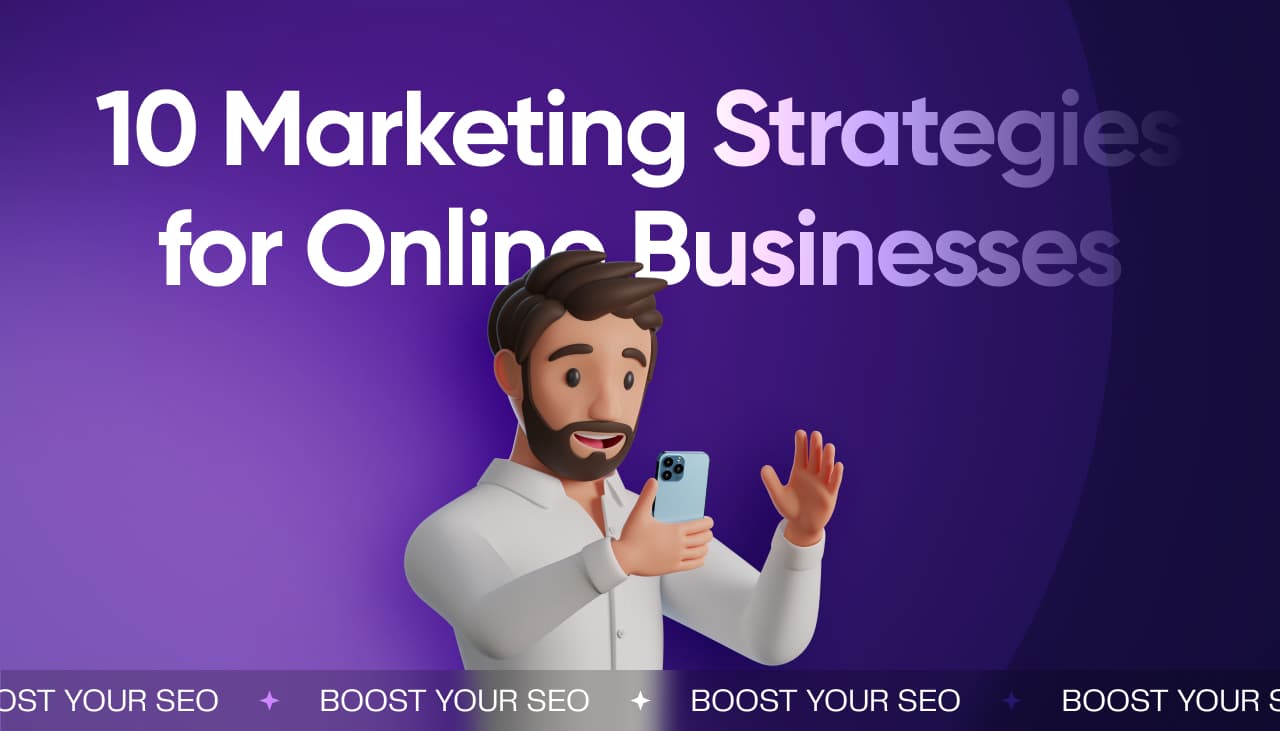










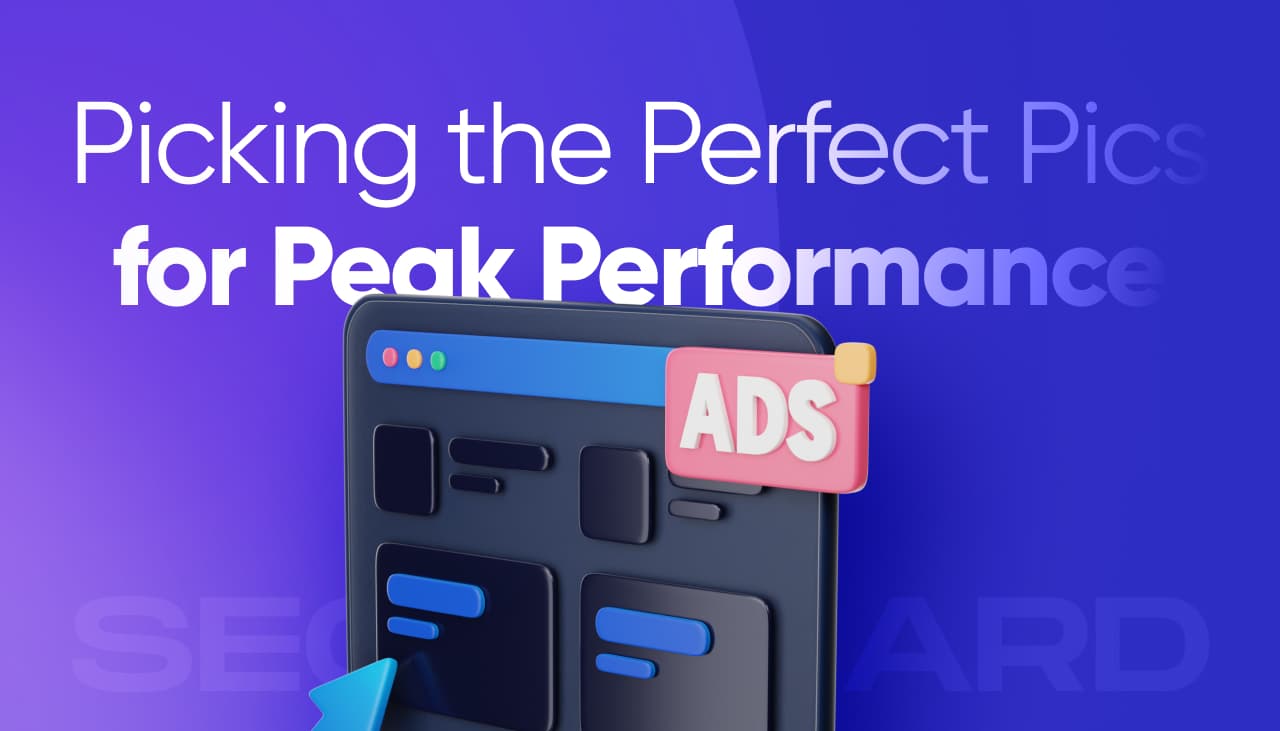

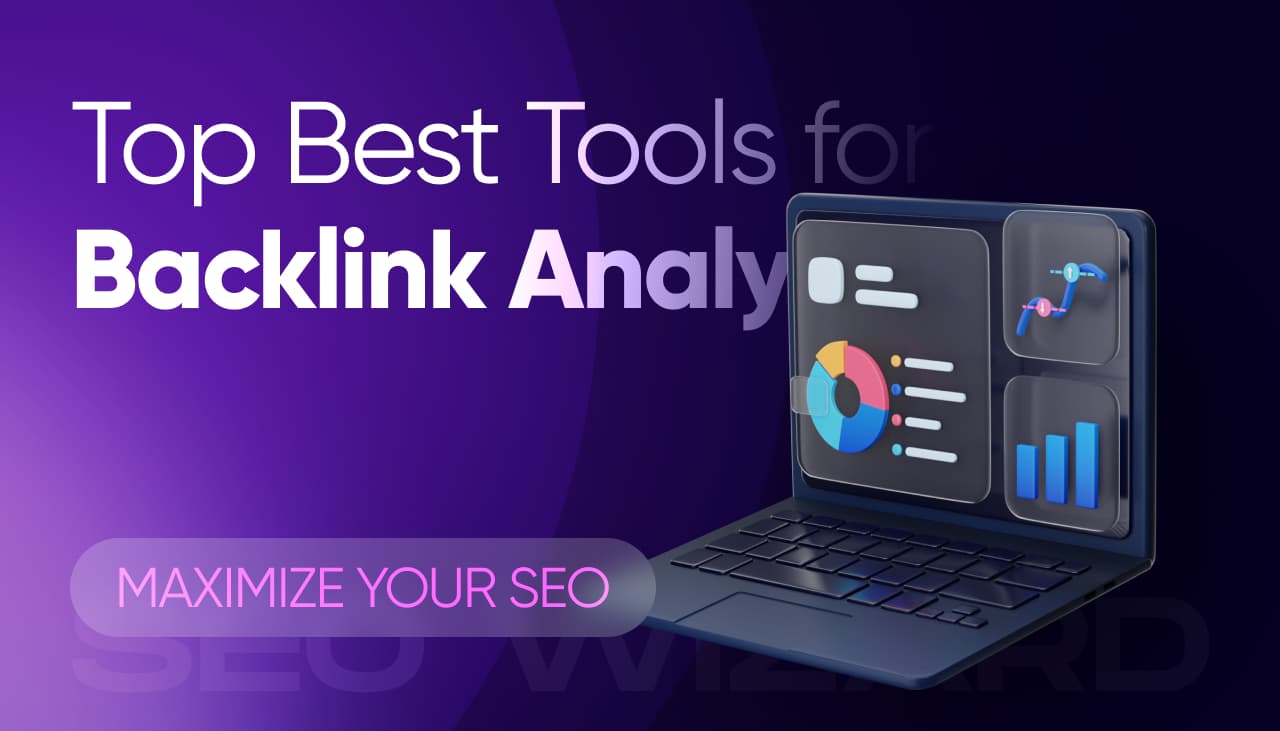


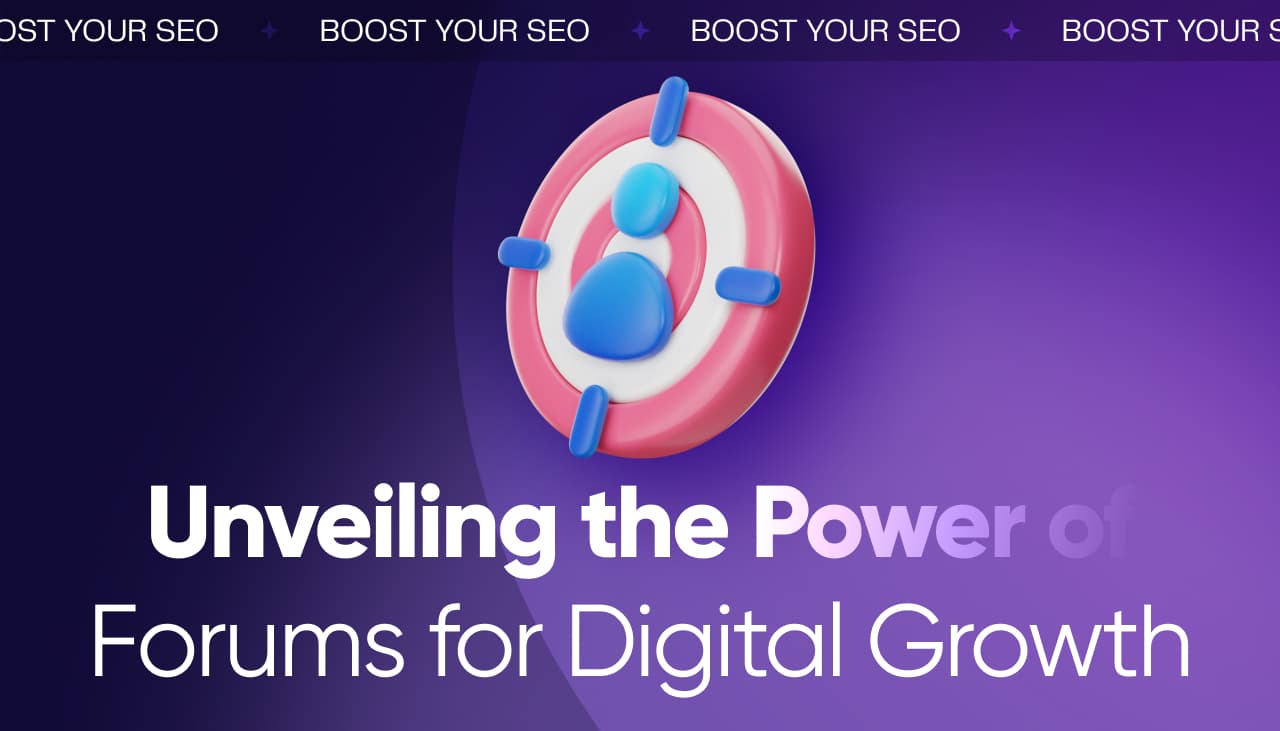



Responses (0 )